Food On The Trail
“Food always tastes better when it is cooked outside!” This may be so, but food cooked away from a comfortable and well equipment kitchen will be nowhere as quick and easy to make. Does food taste better when you have braved the great outdoors? Hopefully after reading this article it will!
There are countless reasons that drive us to cook outdoors, from a simple barbecue in the garden to a much-needed hot meal at the end of a long day’s hiking.
In my experience the former usually does taste better as it has been cooked outside, but then the well equipped kitchen is only a patio away. But as we move further away from home, and further away from microwaves, food processors, fridges and all the other luxuries we take for granted, we move into a different playing field. Foods that were once quick snacks; out of the can into bowl and boiled in the microwave for 2 minutes now seem impossible to cook, or take 10 times longer to prepare.
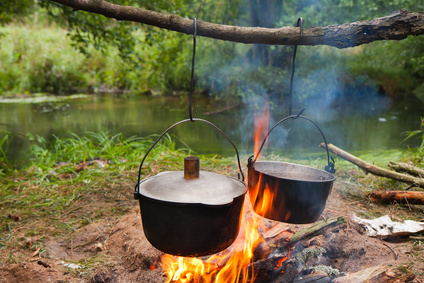
For those of you who have ventured away from civilisation, whether on a hiking, cycling, climbing, or sailing trip, or one of dozens of other outdoor pursuits that take you into the wilderness, you will understand what I am talking about. And for those of you about to embark on perhaps your first expedition to the great unknown, I hope this article will give you some important insights into what you are about to face.
I have written this article in the hope to move away from the time honoured traditions of food burnt to a crisp on an open fire, or dehydrated food; boiling for 3 hours on a single burner stove, with the added flavour of grass and bits of twig.
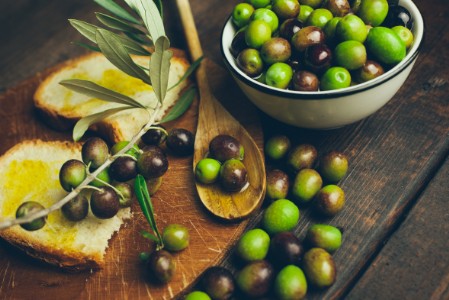
So whether you are planning a few days hiking through Snowdonia National Park in Wales, cycling the Great Wall of China, or planning to reach Everest Base Camp hopefully you will be inspired to move away from more basic outdoors foods and enjoy a little more luxury.
GUIDE TO THIS ARTICLE
The wonderful thing about the Great Outdoors is that there are simply so many places to be and so many different ways of travelling across them. Wonderful when you are in the wilderness but thoroughly difficult when you are sat at home trying to write a book that will appeal to everyone that ventures away from their comfy armchairs.
There are far too many occasions when you will find yourself in the great outdoors, with nothing but a rucksack, for me to be able to mention them all here. So for ease of reading I will just lump them all together and call it simply, ‘The Trail’. Due to this, which ever trail you find yourself on, in any of the four corners of the world you may have to do a bit of adapting to your local environment and the equipment you have with you.
Timings for cooking food outside can vary considerably depending, not only on your cooking medium, but also on the weather, your altitude and even your type of cooking pot. It is therefor very important that you check all food is properly cooked before eating and, if applicable, is piping hot. The last thing you want on the trail is an upset stomach so always try to have the highest standards of hygiene when cooking, although this can be difficult; it is essential!
So read this article, pack your bags and enjoy tasty food in whatever part of the world you choose to travel.
Basic Foods
It is rare that you will find yourself on a trail with the facilities to refrigerate food and keep it fresh; but this doesn’t stop you from taking a variety of tasty provisions with you to cook and enjoy.
The quantity, quality and flavour of these meals vary enormously between manufacturers so it is probably best to try a number of different ones before you head out onto the trail. You don’t want to be stuck somewhere in the wilderness and find you don’t like the taste of your food, or the portion sizes are not enough to fill you up.
"Boil-in-the-bag" is another innovation from outdoor food specialists. These are entire, non-dehydrated, meals sealed into plastic bags. They normally don’t need refrigerating and the entire bag is placed in boiling water to reheat it. An added benefit of these meals is that they can be eaten straight from the bag and save on washing up!
Curries, stews, hotpots, sausages and mash, and chilli con carne are just a few of the wide choice of dinners that are available but desserts such as chocolate sponge and custard, and cooked breakfasts with sausages and beans are also available allowing you to create an entire expedition menu with easy to prepare boil in the bag meals.
Dehydrated foodstuffs are possibly the easiest to carry as they will keep for a very long time in any condition as long as they are kept dry. Being dehydrated also means that they are usually lighter to carry. There are numerous companies that make entire meals in a packet or pot, and only require the addition of boiling water to re-hydrate them.
Pasta, rice, noodles and mash potatoes are normally the staple in these meals with the addition of dried textured vegetable proteins to form the ‘meat’ part, and a few dehydrated vegetables for good measure. You can buy entire meals in a single packet, or various components which can be more versatile- allowing you to mix and match your meals.
If you are planning on creating your own meals, rather than using anything pre-prepared; a lot of the dried ingredients of the dehydrated meals can be bought separately and used in your own combinations.
Dried pasta, rice, noodles, pulses such as beans and lentils, and mushrooms are easily purchased from most supermarkets, but textured vegetable proteins, dried sauce mixes and dried meat and fish are also widely available.
Olives which have been preserved in vinegar, brine or olive oil are easily transported and can last several days unrefrigerated if stored correctly.

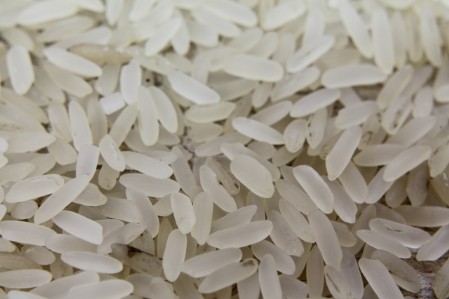
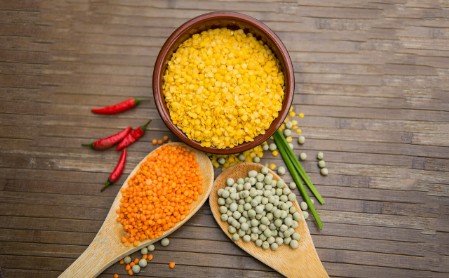
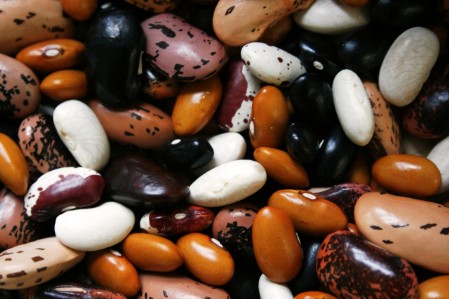
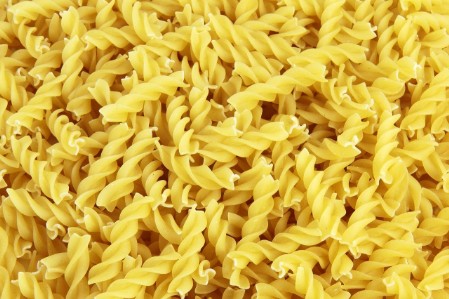
One ingredient you may think you would not be able to take with you is egg, but you may be surprised to know it can be taken on the trail and it is easier than you think. Powdered egg is widely available, and can be used as a substitute for whole eggs in most recipes and makes great scrambled egg! Whole eggs do not need to be refrigerated but as long as they are kept reasonably cool they will last for a long time.
To transport whole eggs, wrap each one in layers of bubble wrap or tissue paper and store in a sturdy food container. Pack the eggs in, and fill and spare space with more bubble wrap or paper. If the eggs are able to move around they could knock against each other and break so pack as tightly as possible. A couple of strips of sticky tape around the eggs can also help to keep them from breaking.
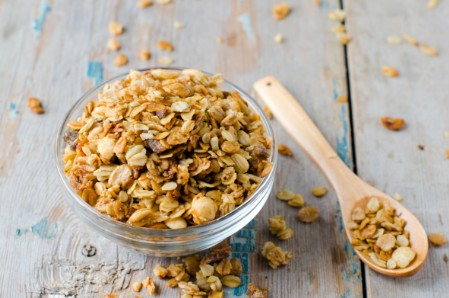
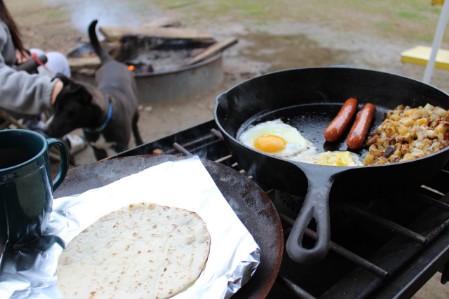
Breakfast
It can easily be argued that breakfast is the most important meal of the day. After a (hopefully) comfortable nights sleep your body needs a good supply of energy to get it going, especially if you have a tough day on the trail ahead of you. Different foods can provide different levels of energy, and can also provide a bit of comfort on a cold morning.
Cereals are light to carry, and available in a huge variety. They normally have added sugar that give you an initial burst on energy and the cereals they are made from give you plenty of sustained energy for the day, or at least until lunchtime. The only problem with breakfast cereal is having to carry milk or use powered milk made up with water.
A nice alternative is to have hot cereal for breakfast. Porridge is an obvious choice, although there are plenty of others. These can all be sweetened with sugar, honey or fruit sauce or can have dried fruit or nuts added for a bit more flavour or variety. If the trail you are on is particularly cold then hot cereal is a great breakfast as it warms you up as well.
A bowl of dried fruit, nuts and seeds do not need any preparation and, if placed in a bag, can be eaten whilst on the move.
If you fancy a more European breakfast; bread, dried meets and cheese are all very tasty.
Lunch
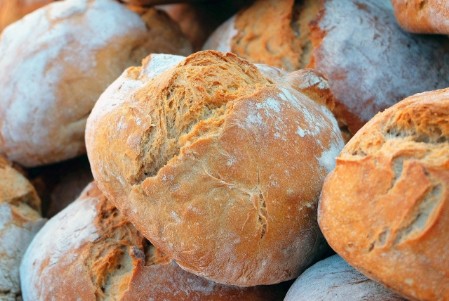

The humble sandwich is a favourite lunch food all over the world but there are some definite limitations to having sandwiches on the trail. Bread generally does not keep well, at best it will just go stale and will still be edible; if not very tough, or at worst go mouldy and become completely inedible.
It is possible to take bread for the first few days of your journey although it is generally best transported in a rigid container. Otherwise, you may end up with a bag of mush rather than slices (I speak from experience). Also an important tip, if carrying loaves or rolls, is to pre-slice them before you go, penknives and multi-tools are great but no replacement for a breadknife.
Crackers, flat breads and rye breads are alternatives to the humble loaf and generally keep longer and are smaller to pack. If you fancy a bit of crunch but not bothered about making a sandwich then you could always carry some bread sticks, crisps or savoury snacks such as tortilla chips.
Some cured meats and hard cheeses can be transported without refridgeration, and although they are heavy; tins or tuna are a firm favourite.
You are likely to be eating lunch part way through your day so choose items that give you some calories and some enjoyment. Chocolate, biscuits, oatbars/flapjacks, peanut butter, dried fruit, jam and sweets are great treats that give you a good boost of energy too.
Dinner
It is likely that this will be your biggest meal of the day, and possibly your only hot meal. Therefore, make sure you put extra effort into your meal planning to make it as nice and tasty as possible and full of nutrition!
At the end of a long day on the trail you are likely be tired and hungry so early preparation; either before you travel or at breakfast if you have time, can save a lot of time and aggravation, and get the food in your tummy as soon as possible.
There are quite a lot of meats that can be taken on the trail that no not require refrigeration. Dried or preserved meats such as some salamis, jerky or biltong can be used in a variety of recipes or eaten as a tasty snack.
Tinned meats, such as ham, chicken or frankfurter sausages are bulkier and heavier than dried meats but are much more versatile when used as part of a main meal, (just remember to pack a tin opener, or buy ones with ring pulls).
Plant based foods are plentiful in tins and packets so there is food for everyone. Baked beans are a firm favourite!
Bolognaise with vegetable protiens and pasta is very commonly eaten on many trails throughout the world and a lot of adventurers will have there own special pasta recipes.

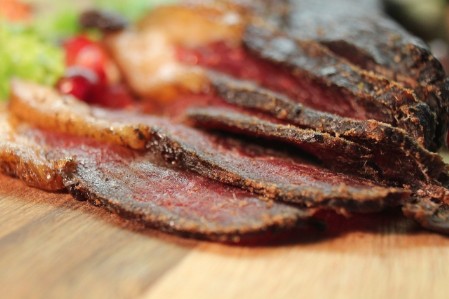
Adding Flavour
Food on the trail does not need to be bland. In fact, you should really savour the eating experience. Remember, whilst food is primarily there for nutrition, it can help us relax at the end of a long day.
Adding a touch of flavour is probably much easier than you think. Dried herbs and spices are exceptionally light as only a small quantity is needed. You could take a variety so each food can be flavoured differently or different members of your group could make their dinner more or less spicy, for example, depending on their tastes.
Salt and pepper the most common spices that you could carry and possibly the most versatile. Even some pre-packed meals could do with a little extra salt from time to time. Adding a pinch to meals can also help rehydration by replacing some of the salts lost through sweating.
If you are feeling more adventurous; some dried chilli flakes, garlic cloves or curry powder can add some spicy heat to the food that will help to warm you up in cold environments. However, it doesn’t only have to be the savoury food that gets the spice treatment. Desserts, milky drinks and porridge can all be jazzed up with a dash of nutmeg, cinnamon, ground cloves or mixed spice.
There are so many herbs and spices for me to possibly mention them all here but pick out the flavourings that you like. A lot of product labels nowadays will even list foods that the particular herb or spice will go well with.
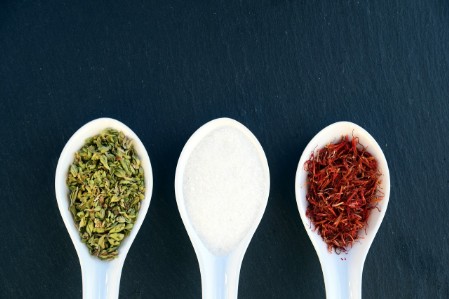
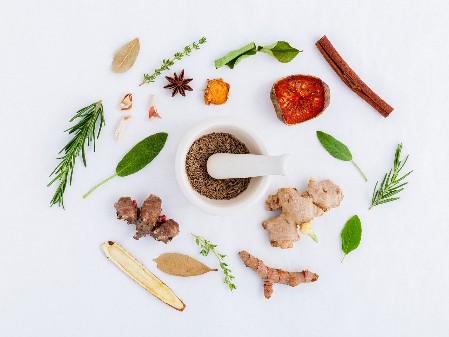
Instead of lugging around whole jars of your favourite herbs and spices you can easily put a couple of spoonfuls into plastic bags and tied tightly at the top, or easier still; use tiny plastic tubs like 35. Although most people have now moved over to digital cameras; these handy, waterproof film containers are perfect for keeping small quantities of ingredients in. Just be sure that they are clean before use. A lot of outdoor shops and catalogues do now sell small containers in a variety of shapes and sizes.
Flavour doesn’t have to stop with herbs and spices. Sachets, like the ones you often find restaurants and cafes, are a fantastic source (excuse the pun) of sauces and other condiments. They don’t normally have to be refrigerated and are small enough to be stuffed into even the smallest corners of your bag.
One ingredient I have found particularly useful, and of course tasty, is Marmite (or other savoury spreads)! A little can be added to soups and stews to enrich the flavour; it can be spread on savoury snacks such as crackers, or used as a sandwich filling; on its own or delicious with cheese!
Instant gravy granules that only require boiling water are great if you’re concerned that your food may be a little dry. Again, no need to take the whole pot just measure out roughly what you think you will need place in a bag or small container.

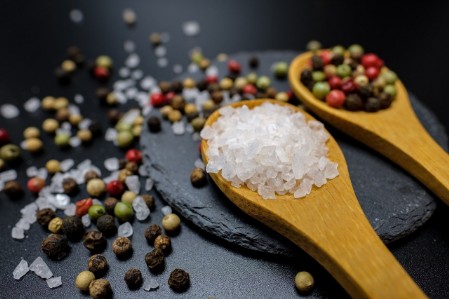
Snacks
Perhaps the most important thing about snacking whilst on the trail is to give you an extra boost of energy, particularly if you are doing any labour intensive activity. However, a small treat every now and then gives you something to look forward to and a chance to enjoy a little indulgence whether sweet or savoury.
Chocolate bars are packed full of energy in the form of sugar and will give you a quick boost of energy. Some chocolate bars do have dried fruit and or nuts in them that can give you more sustained energy.
Specialist energy bars, which are normally cereal based rather than chocolaty, are packed with even more nutrients specifically designed for people who need a real boost.
Continuing with the sweet theme, there is a huge variety of confectionary such as boiled sweets, toffee, jelly sweets and chews that can be popped in a pocket for easy reach and nibbled on without even having to stop and open up your rucksack. These types of sweets are pretty much all sugar and have a high energy content. It can be easiest to pack individually wrapped sweets.
Sucking on boiled sweets is a great way of keeping your mouth moist in hot and dry climates, as well as giving you something to concentrate on when the trail gets really tough.
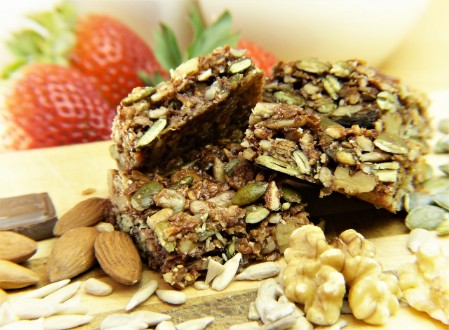
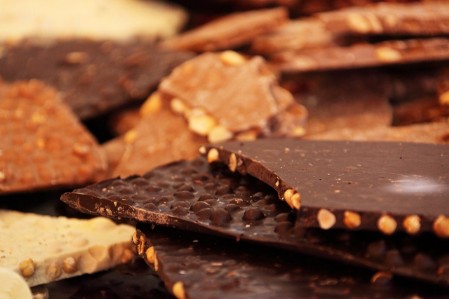
I probably should point out that eating large amounts of sugary foods can be bad for your teeth, (and your waistline) so try to find a balance between getting the calories you need and not overindulging.
Savoury snacks come in all shapes and sizes from bags of nuts to crisps, crackers, breadsticks, seeds and a whole variety of others. Quite often, you can find savoury snacks in small, handy packets and you can just pack as many as you need.
It is very easy to find snack packs that contain a mixture of nuts, dried fruit and seeds, sometimes with spices and other flavourings added or you could simply make your own. Buy some re-sealable bags or other suitable containers and fill with the various bits and bobs that you like.
Most savoury snacks will contain varying levels of salt, which of course too much can be bad for you, but when exerting yourself in hot and dry climates it is a good idea to replace some of the salts your body loses through sweating.


Desserts and Sweet Treats
I have found that food etiquettes from home have little or no meaning whilst on the trail, and you should not worry about combining odd ingredients that would not normally go together. For example, a squeezable bottle of strawberry sauce would usually be kept for pouring over ice cream or desserts, but on the trail there is no reason that it can’t be squirted between a couple of biscuits, mixed into dry cereal or used to dunk marshmallows into.
Not convinced? At the end of a hard day travelling on the trail you might be surprised by what you fancy eating!
Biscuits and cakes (especially fruit cake) can keep for a long time if stored correctly in an airtight container and can either be a tasty snack or a dessert. Brownies are particularly tasty.
Custard powder is a brilliant food to carry on the trail, especially the type than can be made by simply adding hot water and stirring. It can be eaten as a dessert on its own, or used to smother a piece of cake. Add some variety by melting in some choclate pieces or peanut butter.
There are a few incredibly simple sugary foods that make wonderful desserts. One very popular treat is toasted marshmallows. Although bulky in size, marshmallows are super light and easily transported.
Toasting them on long sticks over an open fire, stove or even a candle can be a lovely social activity as well as providing hot, gooey, sugary marshmallows to chomp on, but be careful as they can get exceedingly hot and can burn mouths and fingers.
Chocolates, toffees and popcorn are snacks that be eaten straight from the packet and are good comfort foods.
Fresh or dried fruits are healthier options. If you can afford the weight, a tin of fruit salad is lovely and refreshing at the end of a long day on the trail!

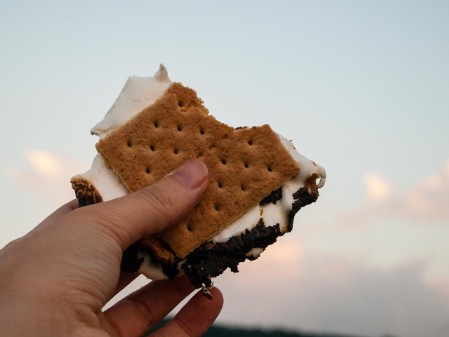
Drinks
People often forget about drinks when organising the menu for their time on the trail. The most common ‘staple’ drink for pretty much everyone; is water. Either bottled, from a tap or collected from a local stream or river.
Before I go any further I just want to mention some important points if you do plan to collected drinking water from local streams, rivers etc. Even if water looks clean and fresh it could contain harmful pollutants, bacteria or other nasty things that could make you very ill or even cause death. You should ensure water is made safe before using for cooking, cleaning or drinking.
Most organisms that live in water will be killed off if you boil the water vigorously for at least ten minutes. This can be difficult at high altitude as water boils at a lower temperature!
People often forget about drinks when organising the menu for their time on the trail. The most common ‘staple’ drink for pretty much everyone; is water. Either bottled, from a tap or collected from a local stream or river, but take precautions to ensure it is safe to drink.
Water filters/pumps make water safe by pushing or allowing water to travel through a filter that collects the impurities. Often these type of water purifies have activated charcoal or other similar chemical purifier in them as well to really ensure that nothing nasty gets through. Be aware though that they filters to become saturated over time so check the instructions to ensure it will last you for the entire trip.
Water is exceedingly heavy to carry; one litre of water weighs one kilogram. Alternative drinks such as juice and squash are just as heavy. Depending on your trail, the weather conditions, and how much you are exerting yourself you may need to drink copious amounts so plan ahead and research where you can access more drinks as you may be unable to carry everything you need.
If you get bored of water being your only drink then try to get hold of some powdered drinks. These come in a variety of fruit flavours, either in individual sachets or in tubs. Simply mix them with water and enjoy.
It is also possible to make up flavoured milk by using fresh milk, if available or powdered milk; the former tastes much better but you are more likely to be carrying the latter. Most supermarkets sell powders that add flavour to milk, usually strawberry, chocolate or vanilla but there are others, or there are liquid flavourings that do the same job.
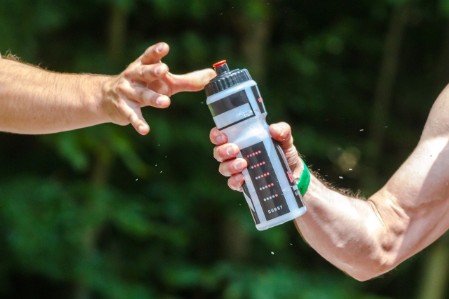
The usual hot drinks; tea, coffee, hot chocolate are all light and easy to carry just make sure you bring enough milk, sugar, coffee creamer, or whatever you like in your beverages for the entire trip.
If you have space to carry an insulated flask with you on your trail then you can enjoy a hot drink at anytime of day, just make it up in the morning before you head off on the trail.
Consuming alcoholic drinks at the end of a long day (provided you are old enough and there are no local laws preventing its consumption) is a lovely way to unwind and relax, especially in a group but you should be aware of its potential effects. Not only is it dangerous to be intoxicated in an unknown or unfamiliar environment (extremely dangerous if camping next to water or a steep cliff for example) but it can also increase your risks of dehydration.
In certain environments such as high altitude or if you are particularly exhausted, alcohol can have a different effect on you than normal.
Drink slowly and responsibly and avoid drinking to excess. In addition, if you have a long day ahead of you the following day then the last thing you want is a hangover!
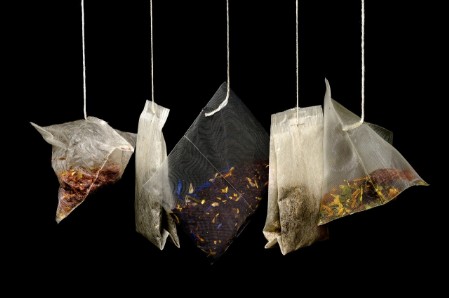

Storing and Carrying
Whatever trail you are on, it is almost certain, that at some point you will need to transport all of your food and cooking equipment from one place to another. From my experience, life on the trail usually involves packing everything as small as possible so it fits into a kit bag, rucksack or vehicle hold.
The amount of food you need can take up a lot of space and create a lot of weight. This creates the necessity to pack well to keep food in an edible state and small and light enough to be transported.
There are numerous plastic tabs available that come in all shapes are sizes from tiny; for containing spices and seasoning, to huge; for bulky foods and liquids.
You can buy specialist sets of plastic tubs that fit snugly inside each other when not in use and are light and easy to carry.
I have found that there are cheaper (or often free) alternatives. The small containers that camera film (in the days before digital) come in are great for small items, especially herbs and spices and the lids fit snugly and are waterproof. A lot of take away restaurants, such as Chinese, will package food in plastic containers that can be washed out and reused; just ensure the lids fit properly.
Re-sealable plastic bags are extremely useful and I would suggest you carry a big supply as they weigh almost nothing and can be used for everything such as dirty socks, soap, batteries and rubbish as well as foodstuffs. Although I would advise, you label the bags so you do not put your delicious, freshly made sandwich into a bag that used to contain your smelly socks!


Foraging
There are entire books devoted to this subject, and I would advise anyone who wishes to forage for food in the wilderness to do some extensive research before you go munching on any random plant or berry that you come across.
Although it is beyond the scope of this book to go into comprehensive detail, I feel, there are some important points I should mention.
In Britain; certainly and in most other countries; exceedingly likely; all land is owned by someone. You should check where you are and if you are allowed to forage for food. This includes foraging for plants and berries as well as catching game, fishing, and collecting shellfish.
In reality, I doubt anyone would notice if you took the odd blackberry growing wild in a hedgerow. However, if you are planning to gather entire meals from the environment around you, or you intend to catch animals for food it is important that you adhere to the law. As well as ensuring that you do not get a criminal record for poaching, or pinching a farmers prized apples, sticking to the rules is important for animal and plant life conservation.

One of the most important things to remember if you ever forage for food is to be 100% certain you know what you are eating! Mushrooms are an excellent example of this but certainly not the only one.
There are many edible varieties of mushrooms growing all over the place in the UK and abroad, but there are also large numbers of toxic mushrooms that can be deadly!
Often it is easy to mistake the poisonous ones from their edible cousins but consuming even a small portion can leave you seriously ill, hospitalised or prove fatal.
If in doubt, leave it out!
Safety of food should always be on your mind. Even if you are have positively identified the exact mushroom, berry, plant or animal you are going to eat there are still possibilities for contamination from other sources to make them dangerous to eat.
Wherever possible always wash food in clean, safe water and avoid anything that looks diseased or decaying. Survival guides and other similar books are usually packed full of information on this topic and I would suggest you do a lot of research before you start snacking on your foraged food.

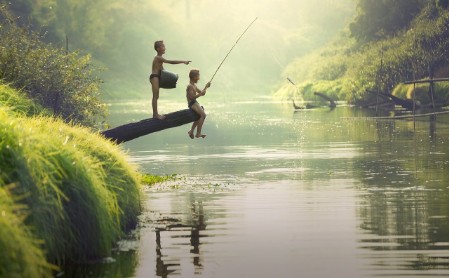
Hygiene
Hygiene on the trail is just as important, if not more so, than at home. Do not forget the basics; wash your hands before preparing or consuming food, wash up dirty crockery and pans immediately after use, do not leave food scraps lying around and do not leave food in a place where it could be infested by creepy crawlies!
When washing your hands, crockery, pans etc. always use clean water that has been purified if necessary (by boiling, filtering, and/or chemical purification). Bacteria or other critters from dirty water sources can easily be transferred into your food if you use it to do the washing up.
If you have no means of disposing of your washing up water in a proper drain I would suggest using only biodegradable washing up liquids so you do not pollute the local environment. Some normal household washing up liquids contain chemicals that could be harmful to the environment.
Brushing your teeth regularly, especially after meals is important to keep your teeth and gums healthy and stave off infections or other dental problems.



